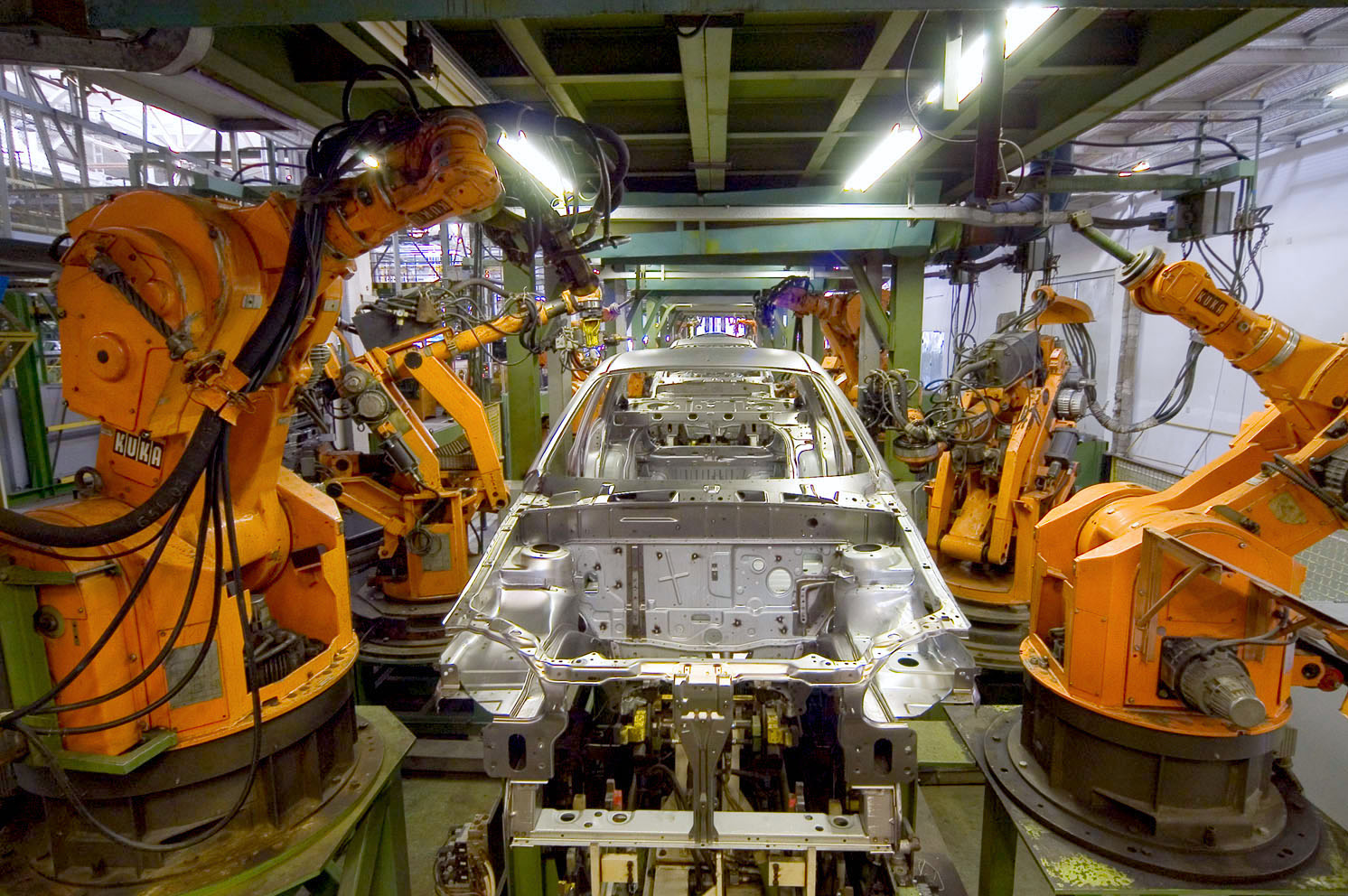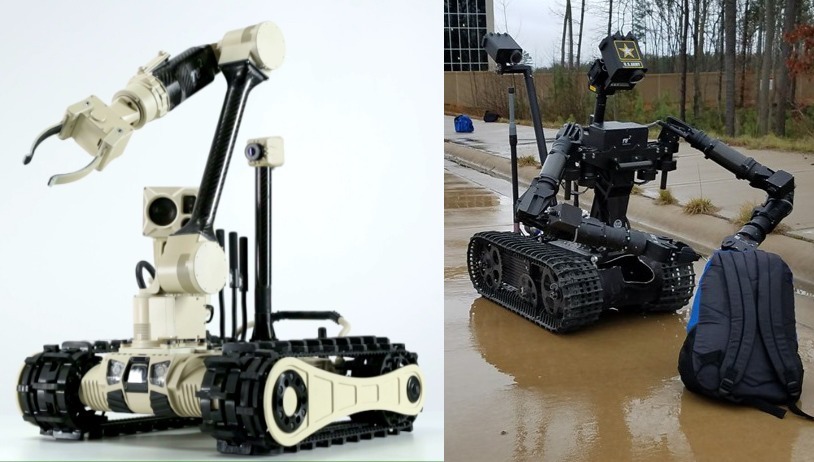The Robots Are Coming
Robotics may be one of the greatest technological innovations of all time, and their rise is just beginning. Specialty, lightweight, precision connectivity products are key to their agility and utility.
As companies look for ways to reduce their labor costs and increase their ability to perform tasks in a human-touch-free manner, the job functions robots perform are increasing. There are fetch robots, picking robots, and autonomous robots. Robots pick fruit, pack boxes, and retrieve things off shelves. Robots help manufacture and assemble things. Robots are on the verge of doing nearly everything that humans can do and they can do many things we cannot, particularly in harsh environments. The rise of highly flexible electronic systems that depend on sensors, connectors, and cables enable these complex systems to perform with accuracy and reliability.
Connectors in Robotics
A wide variety of connector types are used in robotics, from the USB, Ethernet, and D-subminiature connectors used in terminal devices to the I/O connectors (e.g., circular, D-sub, and miniature connectors) that deliver signal and power to every part of the robot to activate its functions. Depending on the operating environment, rugged components may be needed. Easy operability is key. “Connectors are playing more of a role in the robotics industry as companies look at ways to install their systems quickly,” says Allen Bancroft, director of hardware engineering for RE2 Robotics in Pittsburgh, Pennsylvania. “One way to do that is having easily identifiable and accessible connectors to help get power and signals connected. Highly flexible cables will also be playing a bigger role in robotics.”
At the forefront of connector selection, Bancroft says, is standardization. “We like standard connectors, as they are helpful when needing connectors quickly,” he says. But that’s not necessarily true for all robotics manufacturers. “There don’t seem to be many standard connectors currently employed in the robotics industry. Every manufacturer seems to have their own. Therefore, when we go to source one for our purposes, we look for standards, but sometimes come up empty-handed.”
Getting Physical with Performance
Standardize the components, say robotics designers, and make them versatile, compact, light, and capable of delivering proper power. Physical characteristics are important, especially to critical industries such as medicine, defense, and aviation. Connectors must accommodate the needs of designers and manufacturers, plus be easy to procure with a versatile supply chain to support robot design and fabrication.
“Everyone in robotics is still focused on SWaP: size, weight, and power,” says David Ptacek, director of sales for Fischer Connectors. “The priorities come from the military robotics projects, but are also important in medical and industrial robots. While smaller in both size and weight, each connectivity solution has to do more: carry more power and more and faster data. Reducing size and weight is important in all robotics, and especially true with aerial drones. The smaller the drone, the more the weight of a connector matters. Larger military or search and rescue drones will use larger connectors, but they have to work doubly hard, often sending both power and signal in one connector.”
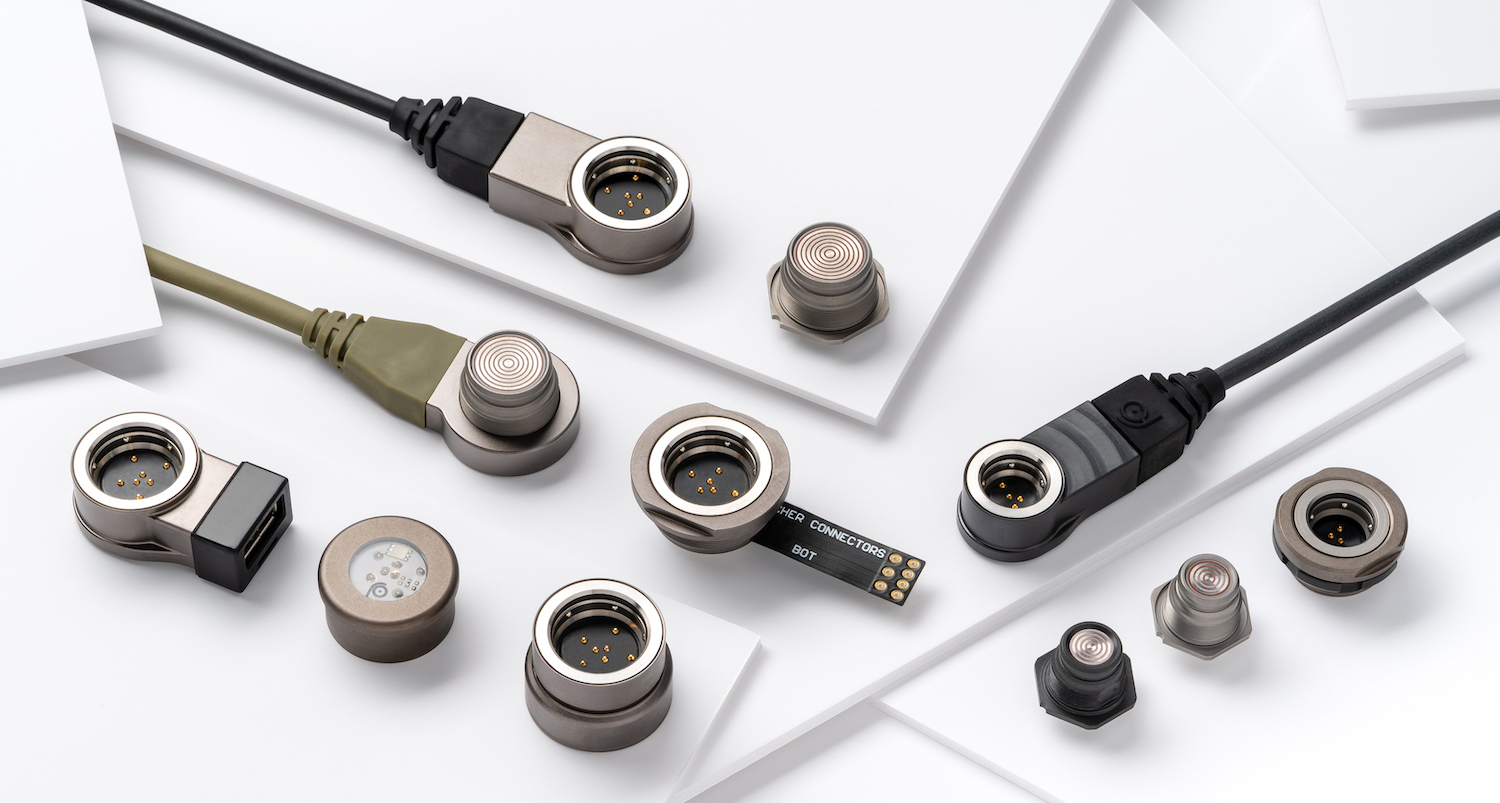
Fischer Freedom™ Series connectors feature a very low profile and 360° mating that works well in industrial, medical, and military robotics projects.
Ptacek says that connector suppliers are designing connectors that provide full functionality in reduced package sizes. “Depending on the application, designers can switch to a lightweight aluminum connector to shave off ounces, or fractions of ounces, if it becomes important. Design engineers are also looking for low-profile connectors to keep sleek designs and save space.”
TE Connectivity designs safety torque sensors for integrated and improved functional safety in collaborative robots. The company tout its sensors as offering “increased accuracy and speed, while meeting new levels of safety requirements to address the growing demand for safe collaborative robots in manufacturing.”
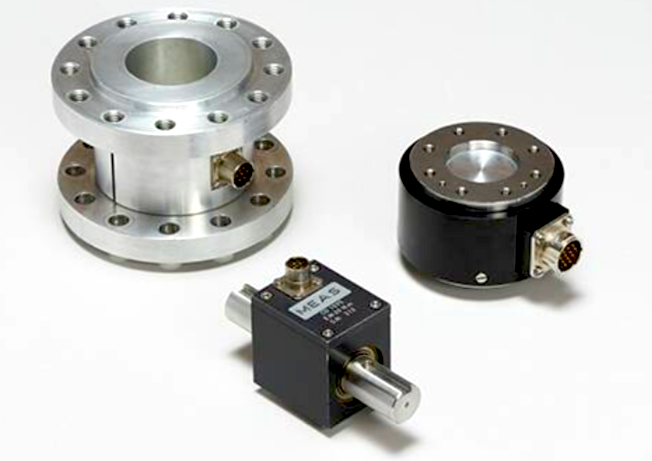
TE Connectivity’s Reaction torque sensors are well-suited for use in various robotics applications.
These connectors will serve the next generation of robots. Safety and accuracy that meld into efficient collaboration between humans and robots is key.
“Providing next-generation sensor solutions to meet safety-critical applications continues to be our priority,” says Ricardo Garcia, product manager, force and torque sensors at TE Connectivity. “Our safety torque sensor balances the demand for safety with accuracy and speed as it relates to human-robot collaboration. With low susceptibility to crosstalk, a customizable mechanical interface, and a standard I2C digital output, this sensor can be easily integrated and adapted to meet our customers’ requirements.”
Connecting the Next Generation to Robots
Harwin sponsors the Harwin Academy, a two-year program at Havant & South Downs College in the UK designed to guide students into design, engineering, and technical careers. Students are exposed to every element of robotics, from design and components to completed systems.
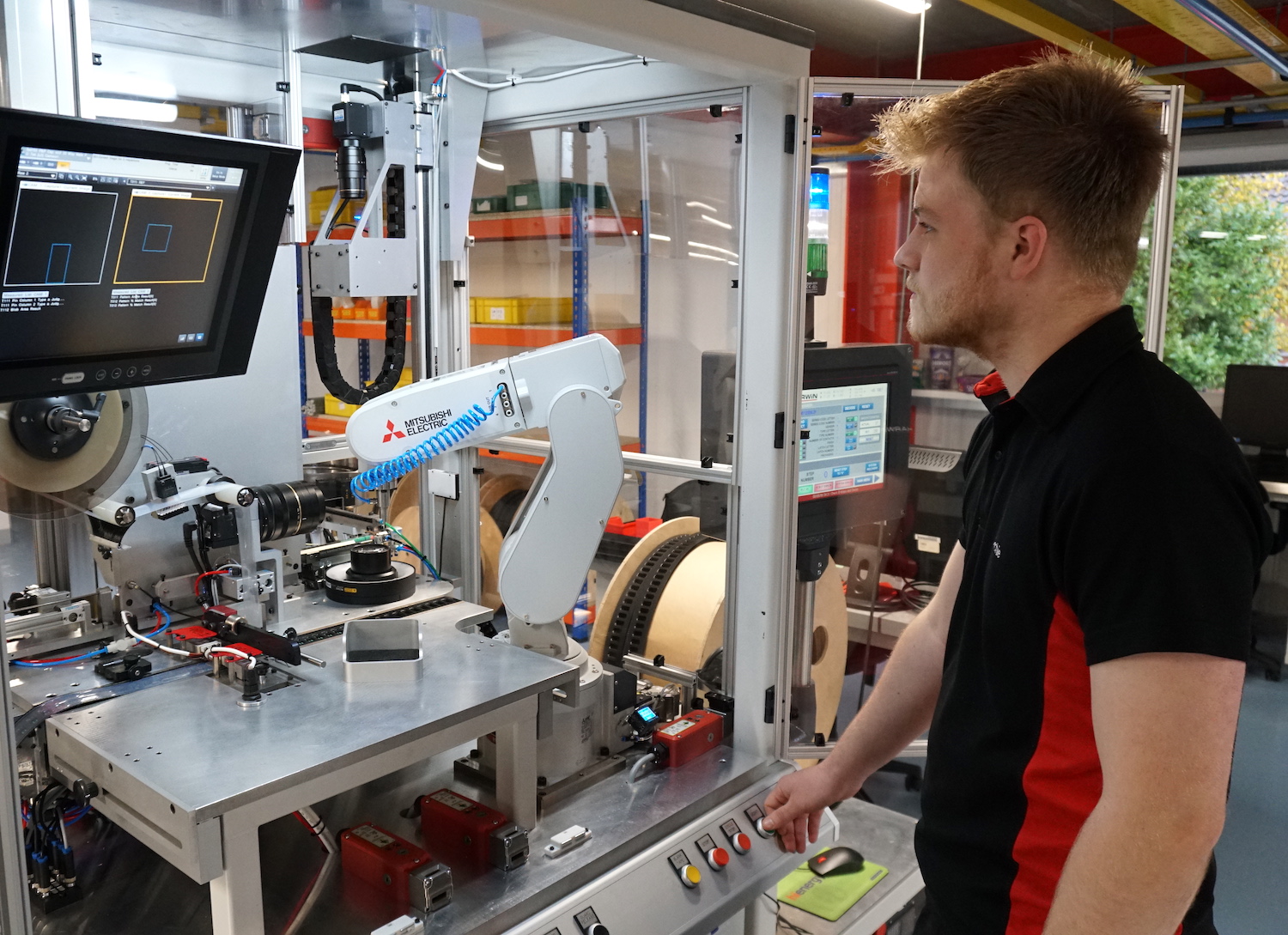
Harwin recently donated a Mitsubishi Electric robotic arm to the Academy. It has a maximum reach radius of 504mm. It also has a dynamic servo-driven motor unit that supports motion across six axes. Absolute encoder technology allows accurate positioning and utmost operational repeatability. The arm will be used for things like inspection and assembly of small components.
“I believe Britain’s future place in the world depends on our ability to advance our skills in robotics and artificial intelligence. It is critical that current engineering students are trained in computer coding and robotics to meet the future challenges that are facing this country,” said Harwin Chairman Damon de Laszlo.
In the end, it is all about collaboration. The students learn the principals of design and engineering together, with the aid of component manufacturers who provide the building blocks of their creations. Some of these students will ultimately become engineers who design robotic systems, which will assist humans and extend our reach into the future.
Like this article? Check out our other robotics, automation, manufacturing, and Connector Basics articles, our Industrial and Sensors/Antennas Market Pages, and our 2020 and 2019 Article Archives.
- The Robots Are Coming - April 21, 2020
